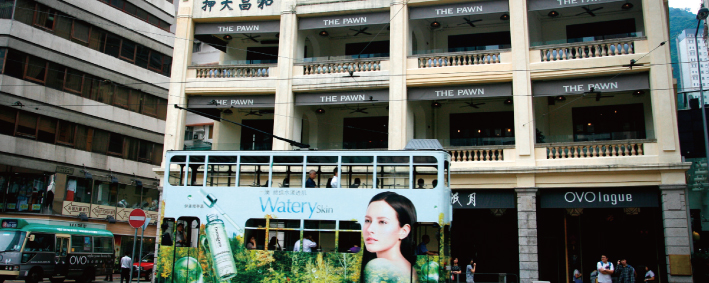 |
CCCH9031 China: Culture, State and Society
|
Course Description
The goal of this course is to stimulate students’ interest in built heritage conservation and utilization, along with a view to motivate and empower them to partake in community action for heritage conservation as responsible citizens. Through organized and guided local field studies on selected Hong Kong military and government built heritage sites on public land/museums and lectures, the course examines how built heritage conservation, as an emerging policy issue in Hong Kong and the rest of China, can be understood in terms of basic concepts of property rights and sustainable development. It introduces simple theoretical concepts of property rights, curation and sustainability to students through observing examples of built heritage conservation on public land in Hong Kong from a media perspective and from personal experience as informed by an awareness of relevant policy initiatives and social actions. Students will have opportunities to review selected case studies in tutorials and participate in commonly guided field trips to selected Hong Kong military and civilian heritage sites. The knowledge base is in the fields of architecture, property rights, surveying; building development, and development control. Attention will be particularly drawn to examples of local real life attempts to transform sites suffering from environmental degradation into positive and attractive sustainable uses.
[This course has a MANDATORY and physically demanding open air field trip component, which entails a high degree of discipline, prudence and mutual support, as a primary vehicle of learning. There will be a total of three field trips (10:30am to 5:30pm). Any of these trips will be rescheduled, shortened or cancelled in case of adverse climatic conditions (like heavy rains, typhoons), hill fires or public health requirements. Students will need to purchase current government aerial photos, plans and survey maps (costing not more than about HK$500 per student) for completing the assignments based on fieldwork.]

Course Learning Outcomes
On completing the course, students will be able to:
- Describe and explain the observable phenomena of built heritage degradation and conservation in terms of different forms of property rights and modes of access and their resource use implications and the significance of property rights for enabling/inhibiting innovations by investment.
- Describe and explain the concept of built heritage and the common methods of classification and conservation; competing conservation approaches and provide an overview of built heritage endeavours by government, NGO and private bodies.
- Critically examine a Coasian-Schumpeterian approach to institutional and technical innovations in helping to foster sustainable development by actively conserving and using built heritage.
- Apply the approach to sustainable development through innovations to appreciate, evaluate and formulate policy and project proposals for built heritage conservation and use, using real world comparable examples as sources of ideas.
Offer Semester and Day of Teaching
First semester (Sat)
Study Load
| Activities | Number of hours |
| Lectures | 7.5 |
| Tutorials | 8 |
| Fieldwork / Visits | 20 |
| Reading / Self-study | 50 |
| Assessment: Worksheets | 12 |
| Assessment: Group project presentation (incl preparation) | 23 |
| Total: | 120.5 |
Assessment: 100% coursework
| Assessment Tasks | Weighting |
| Participation | 20 |
| Group project | 40 |
| Worksheets | 40 |
Required Readings
Selections from:
Practice Papers
- Davies, S. N. G. (2019). Cape D’Aguilar: an example of multilayered heritage. Survey and Built Environment, 28(1), 8-28.
- Davies, S. N. G., Lai, L. W. C., Ho, D. C. W., & Tan, Y. K. (2021). Bokhara Battery and D’Aguilar Battery: Survey findings. Survey and Built Environment, 30(1), 86-106.
- Davies, S. N. G., Tan, Y. K., & Lai, L. W. C. (2022). Japanese occupation period military structures near Hong Kong’s Northeastern border: an initial survey. Surveying and Built Environment, 31(2), 64-147.
- Lai, L. W. C., & Ho, D. C. W. (2003). Facilities management and planning for heritage sites: Lessons learnt from a pilot study on dis-used military sites. Facilities, 21(3/4), 80-88.
- Lai, L. W. C., Ho, D. C. W., & Leung, H. F. (2003). Survey of the Devil’s Peak Redoubt and Gough Battery. Journal of the Hong Kong Branch of the Royal Asiatic Society, 42, 101-137.
- Lai, L. W. C., Ho, D. C. W., & Yung, P. (2007). Survey of the Pottinger Battery. Journal of the Hong Kong Branch of the Royal Asiatic Society, 47, 91-114.
- Lai, L. W. C., Tan, Y. K., & Davies, S. N. G. (2021, December). Pillboxes on Hong Kong Island in the Era of World War II. Special Issue of Surveying & Built Environment. Hong Kong, Hong Kong Institute of Surveyors. [200 pp.]
Theoretical Papers
- Chau, K. W., Choy, L. H. T., & Ho, Y. L. (2018). Institutional arrangements for urban conservation. Journal of Housing and the Built Environment, 33(3), 455-463.
- Chau, K. W., Davies, S. N. G., Lai, L. W. C., & Lennon, L. H. C. (2023). Museums for ex situ tangible Heritage conservation: A Neo-institutional analytical and empirical economic analysis. Land Use Policy, 127, 106561.
- Chau, K. W., Lai, L. W. C., & Chua, M. H. (2022). Post-colonial conservation of colonial built heritage in Hong Kong: a statistical analysis of historic building grading. Environment and Planning B, 49(2), 671-686.
- Lai, L. W. C. (2020). Sustainable development of heritage conservation and tourism: A Hong Kong case study on colonial heritage. Sustainable Development, 28(5), 1181-1188. From http://dx.doi.org/10.1002/sd.2067
- Lai, L. W. C., & Ho, D. C. W. (2016). Farms are not zoos: A post-colonial study on enclosure and conservation of military heritage buildings in Hong Kong. Urban Studies, 53(5), 851-866.
- Lai, L. W. C., Davies, S. N. G, Choy, L. H. T., & Chau, K. W. (2022). Land planning, property rights and management of built heritage: Some Hong Kong observations of colonial military Buildings. LAND. From https://doi.org/10.3390/land11091516
- Lai, L. W. C., Davies, S. N. G., Lau, P. L. K., Leung, N. T. H., Chan, V. N. H., & Chua, M. H. Y. (2023). Ring up for an appointment”: Empirical & oral evidence of commercial & other freedoms in the heyday of the Kowloon City. Cities, 135, 104232.
Books
- Beder, S., & Earth Foundation Australia. (1996). The nature of sustainable development. Newham, Victoria: Scribe Publications. [Part one]
Course Co-ordinator and Teacher(s)
| Course Co-ordinator | Contact |
| Professor L.H.T. Choy Department of Real Estate and Construction, Faculty of Architecture |
Tel: 3917 2146 Email: lennonchoy@hku.hk |
| Teacher(s) | Contact |
| Professor L.H.T. Choy Department of Real Estate and Construction, Faculty of Architecture |
Tel: 3917 2146 Email: lennonchoy@hku.hk |
| Professor L.W.C. Lai Department of Real Estate and Construction, Faculty of Architecture |
Tel: 3917 2146 Email: wclai@hku.hk |

